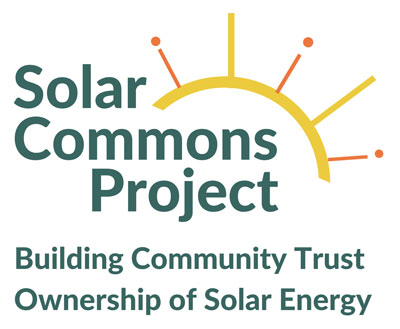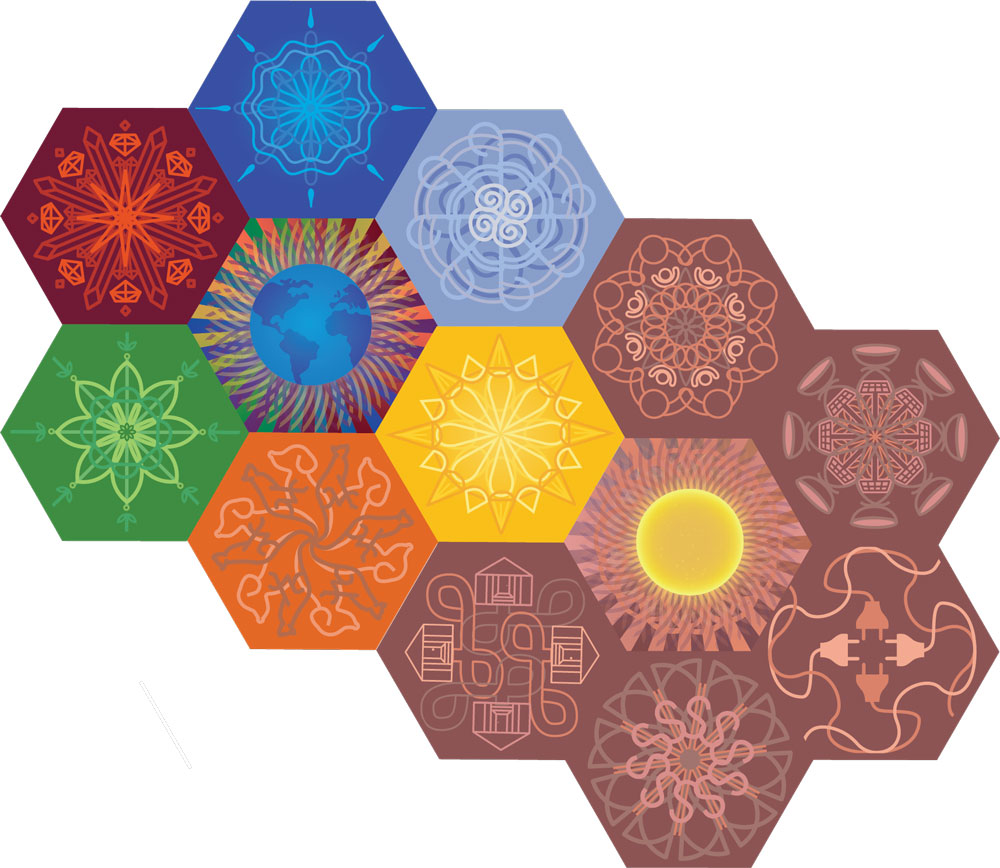
The Solar Commons Model – An Infrastructure for Commoning
The Solar Commons Model is an infrastructure for commoning, a system that interlinks geological, ecological, social, and cultural processes with the intention of producing a local common good. Infrastructures for Commoning are not new. Human societies have always created ways to equitably share sources of life for present and future generations. Village rules in feudal England to share agricultural fields; water temple networks in Bali where timely prayers open irrigation gates to neighbor’s rice paddies. Over time, humans have created ways to share water and land so their families can mutually flourish. These social-ecological systems are often embedded in belief systems that place humans in right relationship to the earth and each other. Photovoltaic technologies can also be organized to gather nature’s common wealth and direct it to build equitable common good.
Elements: The Solar Commons Model can be described by its guiding principles, how the model works, the toolkit that supports it, and its iteration plan.
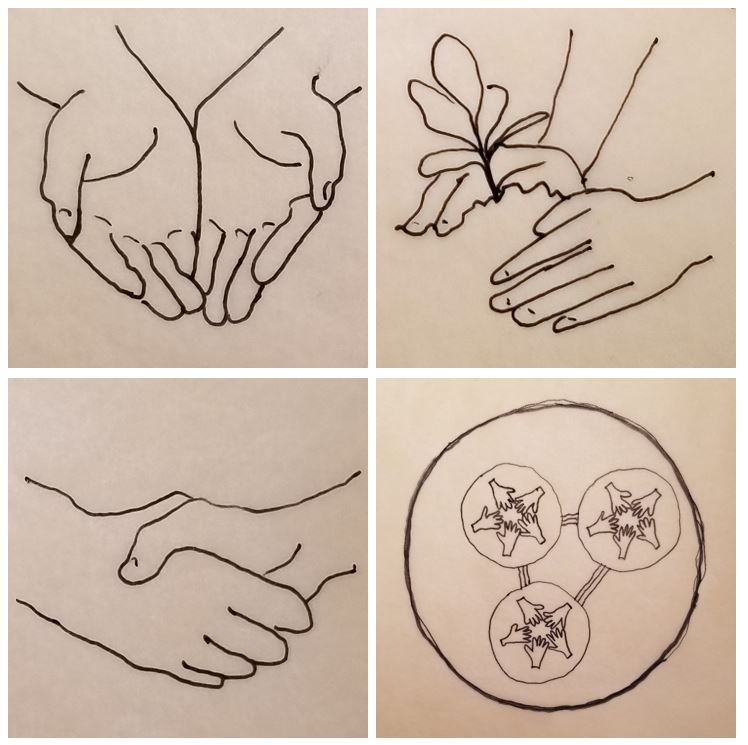
Guiding Principles
The Solar Commons Model has several guiding principles that shape its interconnective work including: the gift economy which is reflected in the mutualism of earth systems and the reciprocity and obligation needed to equitably share the earth’s common wealth; the intention to repair the world; and two principles from the scholarship of Elinor Ostrom: the need to innovate community trust governance structures, and the need for subsidiarity or nested forms of governance at the smallest scales.
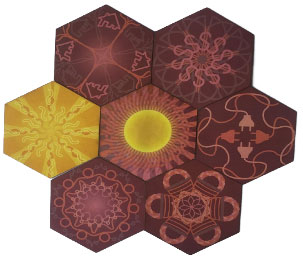
How the Model Works
The Solar Commons Community Trust Ownership Model links the gifts of the sun to clean electricity generation and to market-priced solar savings on a host’s monthly electric bill. It then creates obligation so that the host passes the electric bill savings on to a community trust fund which translates market value to common wealth and distributes those funds to a beneficiary following rules created by the community.
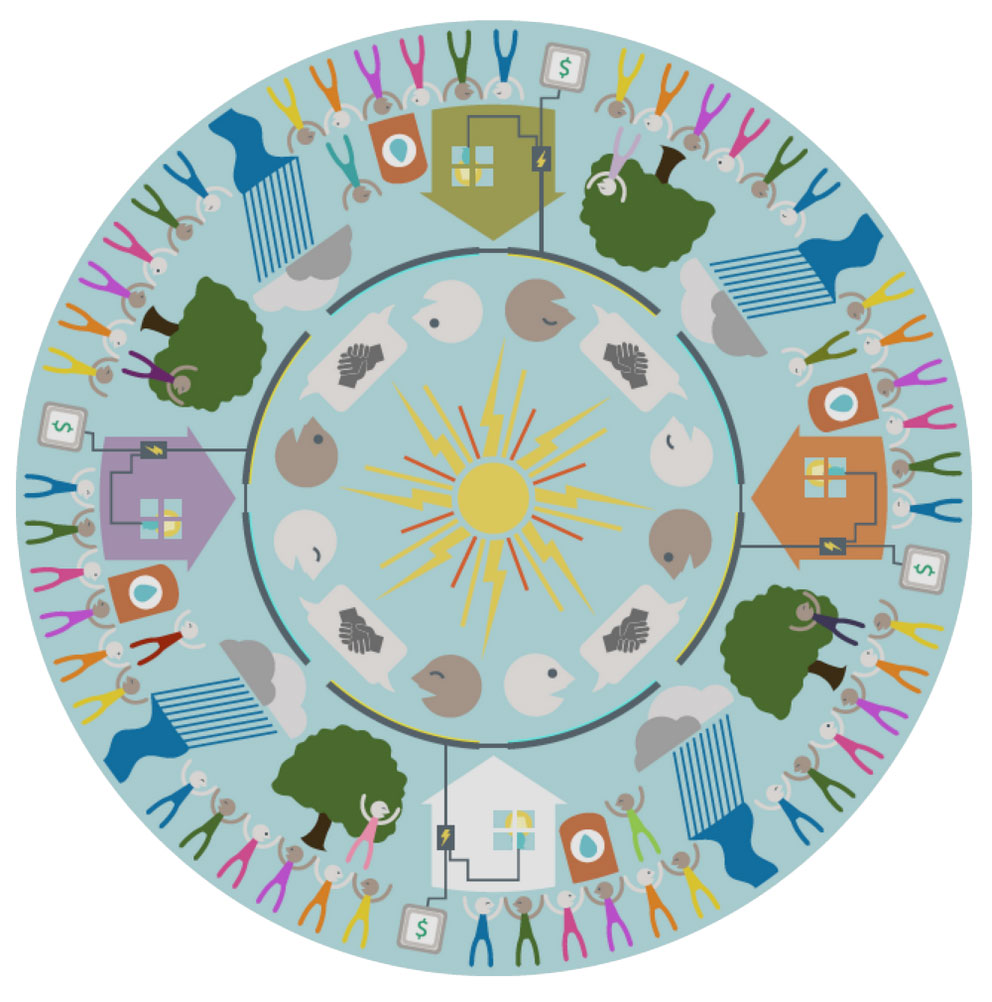
Image from: Dakota Nicole Worden
Toolkit
Over the next three years with our funding partners, Solar Commons Project researchers will design a TOOLKIT for communities to apply the model and build their own Solar Commons. We’ll develop and test our open-source tools with community partners in Living Labs. By building several 500kW solar arrays in rural and urban areas, we will develop and test the community trust ownership tools these low-income neighborhoods and tribal communities need to gather, locally manage and share their portion of the sun’s common wealth benefits. The toolbox will be shared with open-source criteria and standards that assure its robust future as twenty-first century infrastructure for commoning.

Gallery of Solar Commoning
The Gallery of Solar Commoning explores the way that the sun’s common wealth gifts are appreciated, and the technology of solar energy is culturally integrated in communities around the world.
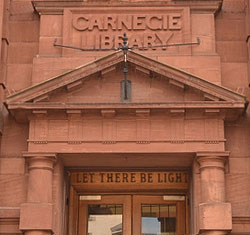
Iteration Plan
Twenty-first century philanthropy has a successful donor-model to distribute common wealth benefits to local communities: the Carnegie Free Libraries model. The US Steel magnate Andrew Carnegie provided an idea (free libraries) and a model (general architectural and public support terms) in which he could distribute his enormous wealth as a gift to the commons sector. Within two decades, close to two thousand Carnegie Libraries were built across the United States. Solar Commons could also pop up around the country as a new public face for the regenerative common wealth that renewable energy can bring to local communities. The Solar Commons Project is creating administrative capacity around the Solar Commons Community Trust Ownership Model so that donors can quickly and confidently distribute the gifts of their wealth to low-income communities who empower themselves through the civic tools of Solar Commons Trusts.


